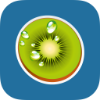Do you know how much fructose you are eating?
From a historical point of view, fruits and honey were the only fructose-rich foods in our diet. In the 17th century the average sugar intake of each person was as low as 5 g per day. Big changes of dietary habits only occurred after the industrial scale production of sugar from sugar cane or sugar beets. Suddenly, sugar was available to everyone in large quantities – at low costs.

Common table sugar is made up of fructose and glucose in equal parts: with each gram of sugar you ingest half a gram of fructose. High-fructose corn syrup (HFCS) usually contains between 42 % (HFCS 42) and 55 % (HFCS 55) fructose.
In 1950 the average intake of fructose in the USA was already 37 g and by 2004 has risen to 49 g daily. The equals almost 100 g of granulated sugar – each and every day. This is a twenty fold increase in the last 300 years! One also has to consider that these are only average values – 10 % of the Western population ingest almost twice that amount! Especially the intake of teenagers and young adults is alarmingly high.
According to latest research, massive sugar consumption is associated with more and more diseases. High blood pressure, obesity, diabetes, hyperinsulinism, non-alcoholic fatty liver disease, fructose malabsorption, gout, hyperuricaemia, breast cancer and renal diseases can either directly or indirectly be caused by the ingestion of huge amounts of the fructose. Therefore, it is very interesting to take a closer look at your actual daily amount of sugar (and fructose respectively).
The human organism did not have much time to adapt to such drastic changes in our dietary habits. It is not prepared for handling such great amounts of fructose. This takes a toll that should not be underestimated. Evidence suggests that 25 g of table sugar daily lead to an increased risk for diabetes. Therefore, the World Health Organisation (WHO) recommends not to exceed this amount.
Reading tip: If you want to know more about the different kinds of sugars in our food, we recommend our sugar compendium.
Back to blog
References:
W. Douard et al., The role of fructose transporters in diseases linked to excessive fructose intake, J Physiol 591.2 (2013) pp 401-414
http://green.wiwo.de/who-warnt-vor-hohem-zuckerkonsum-mehr-als-ein-glas-cola-pro-tag-ist-ungesund/ (09/2015)
Image:
Photo by Alexander Schimmeck on Unsplash

Fructose in table sugar and high-fructose corn syrup
Common table sugar is made up of fructose and glucose in equal parts: with each gram of sugar you ingest half a gram of fructose. High-fructose corn syrup (HFCS) usually contains between 42 % (HFCS 42) and 55 % (HFCS 55) fructose.
In 1950 the average intake of fructose in the USA was already 37 g and by 2004 has risen to 49 g daily. The equals almost 100 g of granulated sugar – each and every day. This is a twenty fold increase in the last 300 years! One also has to consider that these are only average values – 10 % of the Western population ingest almost twice that amount! Especially the intake of teenagers and young adults is alarmingly high.
Chronic diseases caused by fructose?
According to latest research, massive sugar consumption is associated with more and more diseases. High blood pressure, obesity, diabetes, hyperinsulinism, non-alcoholic fatty liver disease, fructose malabsorption, gout, hyperuricaemia, breast cancer and renal diseases can either directly or indirectly be caused by the ingestion of huge amounts of the fructose. Therefore, it is very interesting to take a closer look at your actual daily amount of sugar (and fructose respectively).
The human organism did not have much time to adapt to such drastic changes in our dietary habits. It is not prepared for handling such great amounts of fructose. This takes a toll that should not be underestimated. Evidence suggests that 25 g of table sugar daily lead to an increased risk for diabetes. Therefore, the World Health Organisation (WHO) recommends not to exceed this amount.
Reading tip: If you want to know more about the different kinds of sugars in our food, we recommend our sugar compendium.
Do you want to learn more about the glycemic index of your food?
 Our app "Natural Food Guide" has all the information you need. Check it out on the App Store!
Our app "Natural Food Guide" has all the information you need. Check it out on the App Store!
Share article
Share article
Back to blog
References:
W. Douard et al., The role of fructose transporters in diseases linked to excessive fructose intake, J Physiol 591.2 (2013) pp 401-414
http://green.wiwo.de/who-warnt-vor-hohem-zuckerkonsum-mehr-als-ein-glas-cola-pro-tag-ist-ungesund/ (09/2015)
Image:
Photo by Alexander Schimmeck on Unsplash
![[Blog]](../../rw_common/images/baliza_logo_retina.png)
